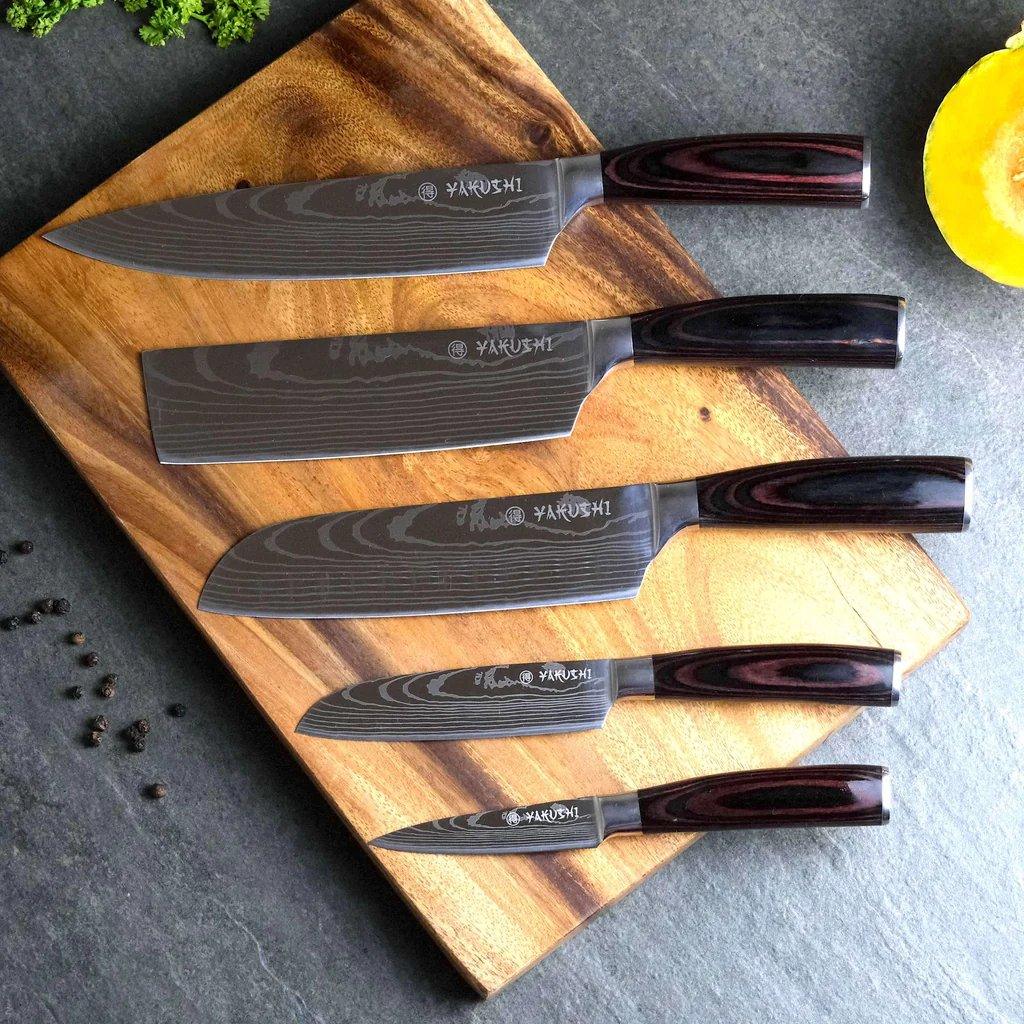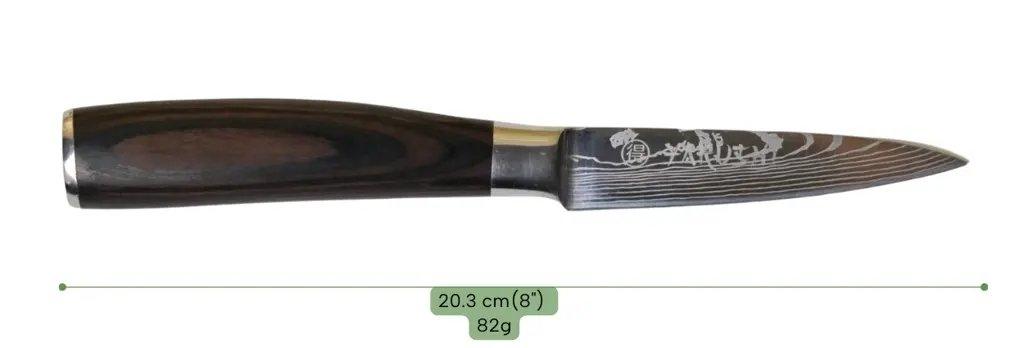Why Use Santoku Knives and
How To Use Them Correctly?

Understanding Santoku Knives
Advantages of Using Santoku Knives
Versatile Culinary Solutions
- Finely-Tuned Mincing: Santoku knives are the go-to choice for mincing tasks that demand precision, such as finely cutting herbs, garlic, and other delicate ingredients.
- Mastering the Art of Chopping: The flat edge of the blade is raised between each cut, delivering precise results.
- Culinary Versatility: Whether you need to mince boneless raw meat, create cubes for stir-fries, or slice cooked meats and poultry, the Santoku knife delivers consistently outstanding results.
- Ideal for Seafood: Its sharp edge is perfectly suited for portioning and filleting fish, making it a favorite among seafood enthusiasts.
Offers Excellent Precision

Effortless Handling and Control
The Santoku knife's carefully crafted attributes contribute to its exceptional control while we use it to cut, chop, or slice ingredients. Its length strikes a perfect balance, allowing for precise cuts with minimal effort. The knife's weight distribution further enhances control, making it a reliable tool for cooks of all skill levels.
The distinctive sheepsfoot blade design is another key attribute. With a flat top that gradually curves towards a point, this unique shape provides stability as you grip the knife's dull edge with your free hand while chopping. It not only ensures safer and more controlled cutting but also makes the Santoku knife less intimidating than larger chef's knives.
The Granton Edge Advantage
The Granton edge design consists of small, serrated indentations or scallops along the blade's length. This unique edge can prevent ingredients from sticking to the blade.
When slicing through delicate items like fish, chicken breast, steaks, or pork chops, the Granton edge minimizes the risk of the skin or meat sticking to the knife's surface. This ensures cleaner, more precise cuts and a neater cooking process, reducing frustration and mess in the kitchen.
Also, the pockets of air created by the Granton edge act as a barrier between the blade and the ingredients. This prevents foods from clinging to the knife, making it efficient for creating uniform slices of meat or fish and for mincing delicate herbs without tearing them, preserving their flavors.
How to Use Santoku Knives Correctly
Using a Santoku knife effectively involves mastering various techniques that work on its unique design for precise and efficient cutting.
- Hold the knife using a "pinch grip" by gripping the blade's base between your thumb and index finger, with your other three fingers loosely holding the handle.
- Keep the knife horizontal above the cutting board, maintaining a consistent distance between the blade's tip and the board, just like the heel-to-board distance. Push the blade diagonally to cut, ensuring the spine stays against your knuckles for control.
- While not its primary use, you can gently rock a Santoku knife to finely cut herbs. Place the tip of the blade on the cutting board and pivot the heel toward what you're cutting.
Care and Maintenance of Santoku Knives
Here are some key tips to keep your Santoku knife in top shape:
- Immediate Cleaning: After each use, hand-wash your Santoku knife with warm, soapy water using a soft cloth or gentle brush.
- Thorough Drying: Before storing your Santoku knife, ensure it is completely dry.
- Avoid Hard Surfaces: To preserve the knife's edge, avoid cutting on hard surfaces such as glass, stone, or metal. Opt for wooden or plastic cutting boards to minimize wear.
- Regular Honing: To maintain a sharp edge, hone your Santoku knife regularly before each use. Honing helps realign the blade's edge and prolongs the time between sharpening.
- Periodic Sharpening: Depending on usage, sharpen your Santoku knife using a whetstone or a suitable knife sharpener.
Choosing the Right Santoku Knife
Here are the key factors that should guide your decision when selecting a Santoku knife to ensure that it suits your needs and preferences.
- Blade Angle: Consider whether you need a 50/50 or 70/30 balanced blade based on your dominant hand.
- Blade Length: Opt for a comfortable length for precise control.
- Steel Type + Hardness: Decide between stain-resistant or high-carbon steel, considering edge retention and ease of sharpening.
- Handle: Pick between ergonomic Western-style handles or traditional Japanese-style wood handles based on personal comfort.
- Price: Select a Santoku knife that fits your budget, with options available for every price range.



Leave a comment
This site is protected by hCaptcha and the hCaptcha Privacy Policy and Terms of Service apply.